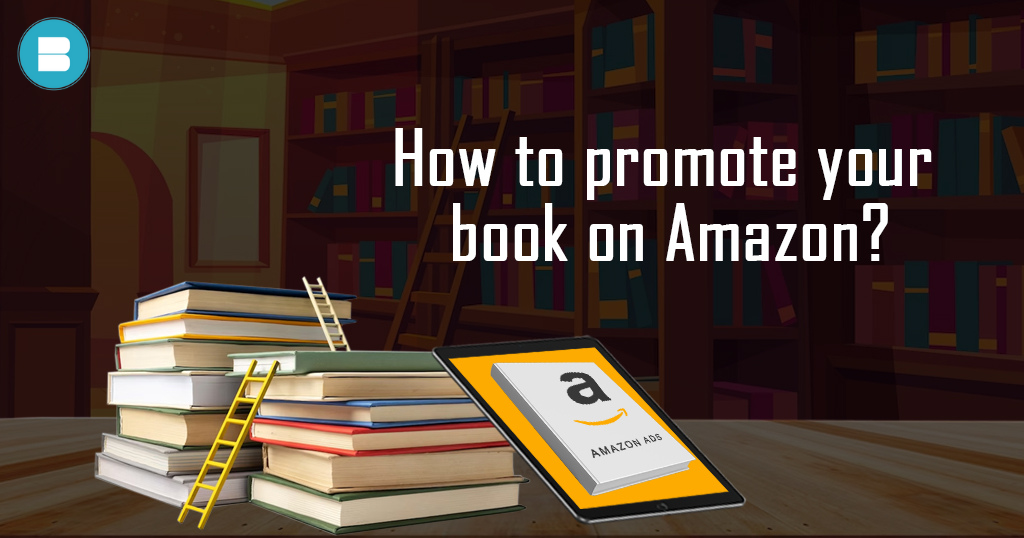
How to Promote Your Book on Amazon: Budget-Friendly Hacks to Boost Sales
Amazon is a renowned venue for authors to present their literary masterpieces in the enormous arena of online book sale. However, amid a sea of accessible publications, efficient advertising is critical to making your work stand out and prosper. This blog reveals low-cost tactics for increasing your book’s visibility and sales on Amazon. Understanding the Terrain: Amazon Book Promotion Navigating the world of Amazon book marketing reveals a myriad of possibilities to exhibit your literary production, suiting a wide range of budgets and goals. The option of self-publishing through Kindle Direct Publishing (KDP), which allows authors to immediately put their work on the digital shelves of Amazon’s massive marketplace, is at the forefront of these prospects. Kindle Direct Publishing is a simple tool that allows writers to self-publish their eBooks. Authors may manage pricing, distribution, and promotional activities with KDP, allowing both established and rising authors to market their books to a worldwide audience. This self-publishing route allows writers to experiment with different marketing methods and pricing points to correspond with their individual aims. Read: A complete guide on how can you promote your book through a video trailer. Furthermore, Amazon’s wide advertising choices provide another channel for authors to increase the visibility of their work. Amazon Advertising offers options such as sponsored product advertisements and lockscreen ads, allowing writers to deliberately target potential readers and increase the reach of their work. These advertising chances may be modified to match various financial limits, allowing writers to maximise their promotional efforts while keeping expenses under control. Understanding Google Play Books Budget-Friendly Book Promotion Hacks on Amazon Using Amazon advertising opens the door to reaching a larger audience. You may customise your campaigns to fit your budget by using alternatives like sponsored product advertisements and lockscreen ads. Your advertising may have a major impact while remaining within your budget by intelligently picking keywords and demographics. This helps you increase the visibility of your work and attract new readers without breaking the budget. Using KDP Select, an Amazon scheme, you may expand the reach of your book. The Kindle Countdown Deal is an effective technique for building urgency by providing time-limited discounts that motivate consumers to buy. Another KDP Select feature is the Free Book Promotion, which allows you to give your eBook away for free for a limited period of time. This may result in an increase in downloads, potentially resulting in increased reviews and a broader readership. Using the power of social media to promote a book is a priceless resource. Platforms like Facebook, Instagram, and Twitter help you generate compelling material that displays your book’s unique characteristics by allowing you to reach a worldwide audience for free. You create a devoted following that becomes ardent advocates for your work by communicating with potential readers, providing insights into your writing path, and establishing a sense of community. If you have an email list, using it to market your book is a straightforward and successful strategy. Notifying your subscribers about your book’s publication or promotions may create excitement and buzz. Exclusive discounts for subscribers offer an appealing incentive to make a purchase, resulting in more sales and deeper engagement. Participating in virtual events allows you to interact directly with your audience. Virtual book launches, author interviews, and webinars are inexpensive ways to reach out to people all around the world. These events allow you to promote your book, share your writing journey, and connect in real time with your audience. Making a personal connection with your readers may lead to a greater appreciation for your work, resulting in a network of devoted followers willing to spread your book through their own networks. By incorporating these tactics, you will be able to negotiate the complex environment of Amazon book promotion. You create the road for higher exposure, increased sales, and improved profits via intelligent advertising, tapping into Amazon programmes, harnessing the power of social media, utilising your email lists, and participating in virtual events. Understanding the costs Amazon Advertising: The cost of Amazon ads varies based on factors like ad type, bidding strategy, and competition. Set a daily budget that aligns with your resources and goals. Even a modest budget can yield results if used strategically. KDP Select: Enrolling in KDP Select is free. However, discounts or free promotions may impact your royalties. Calculate potential losses against the visibility and sales boost these promotions can offer. Social media and email marketing: These platforms are cost-effective, requiring primarily your time and creativity. While some tools and strategies might have associated costs, they are often affordable and provide substantial value. Pricing Your Book Strategically to Promote Book Pricing your book intelligently is an important part of the book promotion process, as it has the capacity to impact both its perception and market reception. Creating the proper pricing necessitates careful consideration of several aspects that combine to achieve a delicate balance between affordability and perceived worth. To begin this pricing adventure, it is necessary to first investigate production costs. These expenses include not just the actual creation of your book but also ancillary expenses such as cover design, editing, and formatting. This practical foundation establishes the platform for knowing the baseline you must cover to achieve a long-term return on investment. Market trends play an important part in solving the price conundrum. Examine how similar publications in your category are priced and measure your target audience’s expectations. Aligning your price with current trends not only gives your book a sense of familiarity but also places it competitively within its category. Equally crucial is determining the perceived value of your effort. This introspective examination dives into the depth of your material, its distinctiveness, and the possible influence it may have on readers. Recognising the value you’re providing helps you base your pricing on the importance of your book in the eyes of its prospective readers. Read: A complete guide on how to publish on google play books in 2023 and how effective is it? While choosing a lower price point may appeal to budget-conscious…
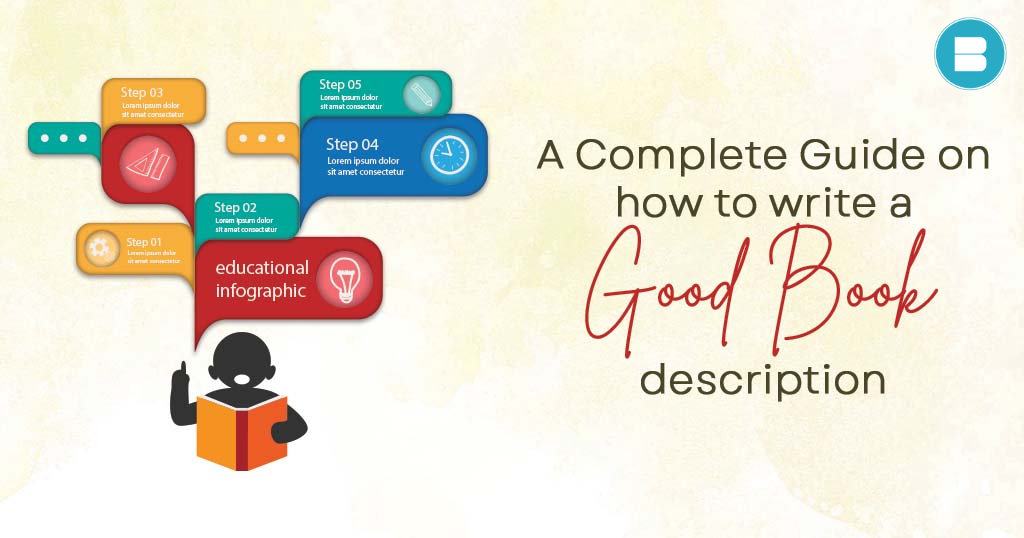
A Complete Guide on How to Write a Good Book Description
The craft of writing goes beyond the pages of a book in the wide domain of literature. The book description is an important factor that frequently determines whether a potential reader would plunge into your literary production. A well-crafted book description may lure, engage, and leave an unforgettable imprint on the mind of the reader. Read: Everything to know about memoir: Definition, Examples & Types of Memoir. In this thorough tutorial, we’ll negotiate the thorny terrain of descriptive writing, providing insights, techniques, and tactics for creating a great book description that resonates with your target audience. The craft of writing goes beyond the pages of a book in the wide domain of literature. The book description is an important factor that frequently determines whether a potential reader would plunge into your literary production. A well-crafted book description may lure, engage, and leave an unforgettable imprint on the mind of the reader. Read: Everything to know about memoir: Definition, Examples & Types of Memoir. In this thorough tutorial, we’ll negotiate the thorny terrain of descriptive writing, providing insights, techniques, and tactics for creating a great book description that resonates with your target audience. How Do You Start Describing a Book? The opening lines of a book description are akin to a literary gateway, beckoning readers to step into a world of imagination and storytelling. Crafting a captivating introduction is not only an art but also a strategic endeavour that sets the tone for the entire reading experience. To embark on this journey of describing a book, one must understand the nuances of drawing readers in from the very first words. The Hook: An Irresistible Invitation Consider yourself wandering through a crowded bookshop, examining the shelves for novels that pique your interest. What causes you to pause? What makes you pick up a book and read the blurb? The solution is in the hook—a magnetic feature that immediately captures your attention and piques your interest. A fascinating book description, similarly, begins with a hook that not only piques the reader’s curiosity but also develops an unbreakable relationship with the reader. The hook can take various forms: Intriguing Question: Start with a question that tantalises the reader’s intellect. For instance, “What if you could change everything in your life from darkness to light with one wish?” Striking Statement: Begin with a bold statement that challenges expectations or invites contemplation. For example, “Under the shine of the sun, a moonlight was born who had one purpose: to reign the world with a single spark that ignited a revolution.” Provocative Scenario: Paint a vivid scenario that encapsulates the essence of the story, leaving readers curious about the unfolding narrative. “While the world was in chaos, there she stood with her hands covered in blood and her clothes brighter than the moonshine.” The hook’s role is to spark that initial interest, causing the reader to pause, intrigued by the world you’re about to introduce them to. Character Introductions and Central Themes: Crafting Immediate Connections Once the hook has captured the reader’s attention, the subsequent step is to create an immediate connection between the reader and the heart of the story. This can be achieved by introducing the main characters or the central theme that drives the narrative. Readers want to feel invested in the characters’ journeys or understand the overarching theme that will unfold. For instance, introduce a character by showcasing their relatable struggles or unique qualities. “Madeline, a gifted weaver of words, shook hands with her inner demons while seeking a haven in the crinkles of pages.” Read: Here’s a list of 10 best parenting books to read for new parents in 2023. Alternatively, provide a glimpse into the central theme that resonates with universal experiences. “Explore the bonds of friendship, love, and loyalty in a tale that navigates the complexities of human relationships.” Evoke Emotions and Set the Scene: Transporting Readers to Your World To truly immerse readers in the world you’ve crafted, employ the power of descriptive language to evoke emotions and set the scene. Convey the ambiance, the mood, and the emotions that will colour the reader’s journey. For example, “In the depths of a misty, forgotten forest, secrets of the unknown whisper in the ears of the known, and a journey of self-discovery unfolds.” By using rich, sensory details, you transport readers to the heart of your story, allowing them to experience its essence even before turning the first page. What is the description of a Novel? The description of a novel captures the heart and soul of your story in a brief and interesting manner. It gives readers a taste of the narrative, characters, and overall theme, leaving them ready to learn more. Begin with presenting the protagonist and their unique journey, then provide a quick description of the difficulties and struggles they face. Emphasise the emotional journey and progress, bringing readers into the emotional core of the tale. Crafting a Compelling Book Description: Tips and Strategies Know Your Audience: Understand the demographic that your book caters to. Tailor your description to resonate with their interests, preferences, and emotions. Highlight elements that will intrigue and captivate your specific readership. Evoke Emotions: Infuse your description with emotions that mirror the tone of your book. Whether it’s excitement, nostalgia, or suspense, emotions create a powerful connection between the reader and the narrative. Let the reader be greedy: Instead of summarising the plot, provide vivid glimpses into key scenes, using sensory details to paint a vivid picture. Allow readers to visualise the setting, characters, and pivotal moments. Highlight Unique Aspects: What sets your book apart? Whether it’s a fresh perspective, a unique narrative structure, or a compelling twist, highlight the elements that make your book stand out from the crowd. Create intrigue: Tease without giving away too much. A well-crafted cliffhanger or a hint at an unexpected turn can leave readers eager to uncover the full story. Convey Genre and Style: Ensure that your description accurately reflects the genre and style of your book. Whether…
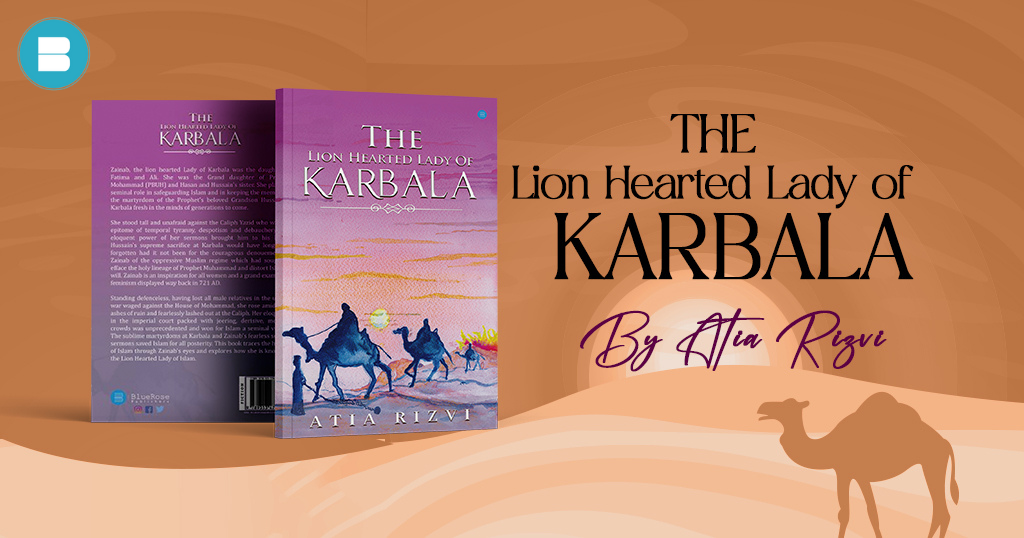
Book Review: The Lion Hearted Lady of Karbala a Book by Atia Rizvi
Book: The Lion Hearted Lady of KarbalaAuthor: Atia Rizvi Blurb: “Zainab, the lion-hearted Lady of Karbala, was the daughter of Fatima and Ali. She was the granddaughter of Prophet Mohammad (PBUH) and Hasan and Hussain’s sister. She played a seminal role in safeguarding Islam and in keeping the memory of the martyrdom of the Prophet’s beloved grandson Hussain at Karbala fresh in the minds of generations to come. She stood tall and unafraid against the Caliph Yazid, who was the epitome of temporal tyranny, despotism, and debauchery. The eloquent power of her sermons brought him to his knees. Hussain’s supreme sacrifice at Karbala would have long been forgotten had it not been for the courageous denouement by Zainab of the oppressive Muslim regime, which had sought to efface the holy lineage of Prophet Muhammad and distort Islam at will. Zainab is an inspiration for all women and a grand example of feminism, displayed way back in 721 AD. Standing defenceless, having lost all male relatives in the unholy war waged against the House of Mohammad, she rose amidst the ashes of ruin and fearlessly lashed out at the Caliph. Her eloquence in the imperial court, packed with jeering, derisive, mocking crowds, was unprecedented and won Islam a seminal victory. The sublime martyrdoms at Karbala and Zainab’s fearless searing sermons saved Islam for all posterity. This book traces the history of Islam through Zainab’s eyes and explores how she is known as the Lion Hearted Lady of Islam.” Review: Few figures in Islamic history stand as resolute and inspiring as Zainab, the Lion-Hearted Lady of Karbala. In her book, titled “The Lion-Hearted Lady of Karbala,” Atia Rizvi takes readers on a poignant journey through the life and legacy of this remarkable woman who played a pivotal role in safeguarding Islam and preserving the memory of the martyrdom of Imam Hussain, the beloved grandson of Prophet Muhammad (PBUH). This book is a testament to courage, faith, and the enduring power of resistance against oppression. Zainab, the granddaughter of the Prophet and born to Fatima and Ali, emerges as an iconic figure who defied tyranny and injustice during one of the darkest chapters in Islamic history. Rizvi’s book not only sheds light on Zainab’s pivotal role but also delves deep into the historical context of her time, making it a valuable resource for those seeking a comprehensive understanding of this period. The narrative begins by introducing Zainab as a central figure within the Ahlul Bayt, the family of the Prophet. Rizvi skillfully weaves together the historical backdrop, tracing the lineage and heritage of Zainab and setting the stage for readers to grasp the profound significance of her actions and words. One of the strengths of this book is its ability to transport readers to the heart of Karbala, where the tragedy of Imam Hussain’s martyrdom unfolded. Rizvi’s vivid descriptions and meticulous research immerse readers in the sights and sounds of the battlefield and the aftermath. The book evokes a deep sense of empathy for Zainab, who witnessed the unimaginable horrors of Karbala and endured the loss of her beloved family members. The author also highlights Zainab’s courage in the face of adversity, particularly her unwavering stand against the Caliph Yazid. Rizvi’s portrayal of Zainab’s eloquence and fearlessness in the imperial court is nothing short of awe-inspiring. Zainab’s impassioned sermons not only challenged the oppressive regime but also served as a rallying cry for justice and truth. Rizvi underscores how Zainab’s resilience and resolve became a beacon of hope and an embodiment of feminism in the 7th century. In a society dominated by patriarchal norms, Zainab’s fearless defiance of tyranny and her ability to articulate her convictions in the most challenging circumstances make her an enduring symbol of empowerment for women. The book explores Zainab’s legacy, emphasising the enduring impact of her actions. It eloquently illustrates how her steadfastness ensured that the sacrifice of Imam Hussain and his companions at Karbala would not be forgotten. Through Zainab’s efforts, the memory of Karbala was kept alive, and the message of justice and righteousness continued to resonate through generations. One of the book’s notable achievements is its ability to bring the historical and religious context to life. Readers gain insights into the socio-political climate of the time, the power struggles within the Islamic community, and the moral dilemmas faced by those who chose to stand with Imam Hussain. Rizvi skillfully navigates these complexities, providing readers with a comprehensive understanding of the events leading up to Karbala and their repercussions. While the book primarily focuses on Zainab’s life and contributions, it also offers a broader perspective on the significance of Karbala in Islamic history. It underscores how the martyrdom of Imam Hussain and the resilience of figures like Zainab became defining moments in the struggle for justice within Islam. This contextualization adds depth to the narrative and enhances the reader’s appreciation of the broader historical significance of these events. “The Lion-Hearted Lady of Karbala” is a well-researched and passionately written tribute to a remarkable historical figure. Atia Rizvi’s narrative style is engaging and accessible, making the book accessible to readers with varying levels of familiarity with Islamic history. The author’s deep reverence for Zainab and her commitment to preserving her legacy shine through on every page. In addition to its historical and religious significance, this book also serves as a call to action. It reminds readers of the timeless importance of standing up against injustice and tyranny, regardless of the era. Zainab’s example becomes a source of inspiration for those who seek to make a positive impact on their communities and the world at large. In conclusion, “The Lion-Hearted Lady of Karbala” by Atia Rizvi is a compelling and informative exploration of the life and legacy of Zainab, a towering figure in Islamic history. Through meticulous research and eloquent storytelling, Rizvi brings Zainab’s story to life, shedding light on her pivotal role in preserving the memory of Karbala and her enduring impact as an icon of courage…
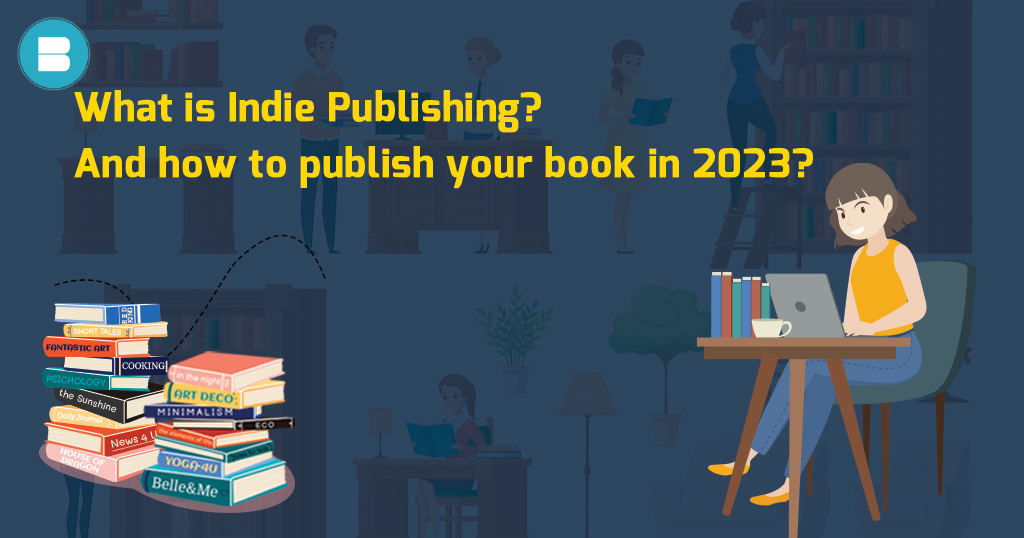
What is Indie Publishing? And How to Publish your Book in 2024
In recent years, the publishing scene has seen a dramatic upheaval. The advent of digital platforms, as well as the democratisation of the publishing process, has given rise to a movement known as “indie publishing.” If you want to share your writings with the world as an aspiring author, indie publishing may be the way to go. In this complete tutorial, we’ll look at what indie publishing comprises and how to get started on this fascinating adventure. Understanding Indie Publishing What Does Indie Mean in Publishing? In the field of publishing, the term “indie” is an abbreviation for “independent,” and its importance is profound in the context of creative expression and dissemination. When it comes to publishing, the term “indie” refers to authors who choose to work outside of the established publishing firms. These writers have chosen to have complete control over their creative material, production, and distribution procedures. This decision allows them to preserve creative control while also fostering a direct connection with their public, free of the typical intermediaries inherent in the publishing industry. Read: Learn How to Write & Publish an Autobiography in 2023. Authors who use an indie approach enjoy a sense of agency over their writing fates. They handle the complexities of the publishing scene on their own, making judgements on issues like editing, cover design, formatting, and marketing. This route allows authors to alter their work. The Difference Between Indie Publishing and Self-Publishing While the terms “indie publishing” and “self-publishing” are sometimes used interchangeably, each attitude in the realm of book production is different. Indie publishing promotes the ethos of self-creation and dissemination. It represents not just the act of publishing but also a larger attitude of accepting one’s identity as a creative entrepreneur. This is more than simply the mechanics of publishing; it is a proclamation of independence, a declaration of creating one’s own path. Self-publishing, on the other hand, involves writers personally supervising the whole publication process, from text creation to final distribution procedures. It covers the practical procedures needed to bring a book to life without the assistance of a typical publishing firm. Indie publishing and self-publishing are complementary in this regard. Embarking on Your Indie Publishing Journey Writing and Preparing Your ManuscriptIt is critical to put time and effort into the quality of your book before embarking on your indie publishing adventure. The stages of polishing, editing, and correct formatting are critical. Quality is critical to the success of your book since it directly influences readers’ impressions and involvement. A well-crafted document not only represents your dedication to your job, but it also builds credibility, drawing and maintaining the interest of readers. Choosing the Right PlatformNumerous sites provide indie authors with a digital platform to display their literary works. It’s critical to conduct research and choose a platform that aligns with your goals, target audience, and distribution preferences. Popular solutions such as Amazon Kindle Direct Publishing (KDP), Smashwords, and Draft2Digital provide a wide range of tools and reach to meet a variety of publication demands. The platform you select should be compatible with your genre, goals, and marketing techniques, ensuring that your book reaches its target audience. Formatting and cover designProfessional formatting and cover design are important investments for indie authors. A visually appealing cover and a well-structured inside layout are critical to attracting the attention of readers and creating trust. A professionally designed cover gives readers an early insight into the spirit of your book, while appropriate formatting improves the reading experience. By emphasising these elements, you increase the marketability of your book and help it stand out in a sea of competitors. Distribution and pricingIt is critical to decide where your book will be accessible, whether in digital, print, or both formats. The distribution methods you choose have a big influence on the accessibility of your book to readers. Setting the correct price plan is also critical. To find a good pricing point, research your genre, evaluate competitors, book length, and the perceived worth of your work. Pricing flexibility may be a powerful tool for attracting readers, particularly during promotional campaigns or sales events. By precisely arranging distribution and pricing, you maximise your book’s market reach and potential. Challenges and Benefits of Indie Publishing Can You Make Money in Indie Publishing? While indie publishing offers the potential to earn royalties from book sales, success is not guaranteed. Marketing, audience engagement, and strategic pricing play significant roles in generating revenue. Authors who invest time in building their brand, promoting their work, and connecting with readers are more likely to see financial returns. Is it Better to Self-Publish or Use a Publishing Company? The choice between self-publishing and using a publishing company depends on your goals and preferences. Self-publishing offers creative control, faster publication timelines, and higher royalty rates. Publishing companies provide editorial support, distribution networks, and assistance with marketing. Assess your priorities and make a decision that aligns with your vision for your book. Is Indie Publishing worth it? Indie publishing empowers authors to bring their stories to the world on their terms. It allows for creative freedom, direct engagement with readers, and the potential for financial rewards. However, it requires a significant investment of time, effort, and sometimes money. Success in indie publishing depends on a combination of quality content, effective marketing, and a willingness to adapt and learn. Read: Here’s a Complete Guide on How to Self Publish a Book in 2023. Indie publishing is a dynamic and ever-changing industry that provides authors with unparalleled opportunities to convey their perspectives. As you begin your indie publishing adventure in 2024, keep in mind that success is the product of hard work, determination, and a desire to always improve your art. You can bring your stories to life and connect with people all over the world by leveraging the power of digital platforms and taking control of your publishing destiny. Whether you’re a seasoned author or a first-time author, indie publishing provides an intriguing new avenue to explore in…
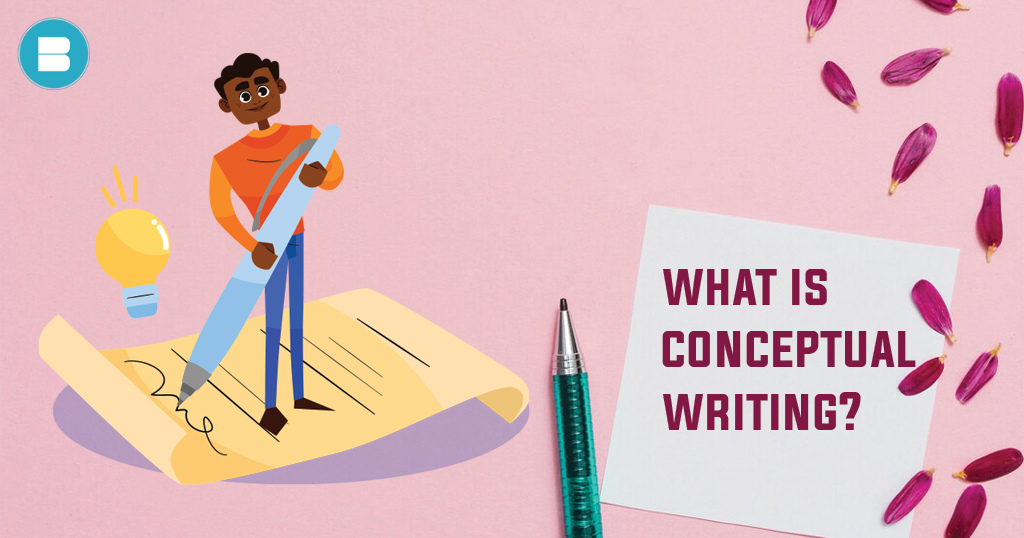
Conceptual Writing: Definition, Elements and Types
Conceptual writing, a separate method within the field of literature, defies conventional rules by elevating ideas, concepts, and intellectual engagement above typical storytelling tactics. Conceptual writing, which is rooted in the investigation of mind and language, blurs the borders between literature and art, encouraging readers to comprehend words beyond their literal meanings. Read: List of 10 Tips for Embarking on Your Creative Writing Journey. We’ll go into the realm of conceptual writing in this complete guide, looking at its definition, important aspects, kinds, and significant thinkers. Understanding Conceptual Writing By emphasising ideas and language above traditional narrative structures, conceptual writing differs from traditional storytelling. Rather of following conventional narratives or character arcs, conceptual authors investigate the complex link between language and concepts. They push the boundaries of language through linguistic experimentation, enabling readers to actively engage in interpreting underlying meanings. This method reimagines the author-reader relationship, enabling readers to become participants in defining the text’s importance. Conceptual writing emphasises ambiguity, intertextuality, and unorthodox forms, arousing intellectual interest and questioning accepted literary standards. It blurs the lines between writer and reader, allowing a transformational reading experience focused on investigation, interpretation, and the subtle intricacies of language and ideas. You may also read: 5 Act Structure: Definition, Examples and More Elements of Conceptual Writing: Language Play: Conceptual writing thrives on linguistic experimentation. Writers manipulate language through wordplay, puns, repetition, and decontextualization to provoke thought and evoke emotions. Intertextuality: Intertextual references to existing literature, philosophy, or culture enrich the layers of meaning within conceptual texts, inviting readers to unravel intricate connections. Visual and Spatial Arrangements: Some conceptual texts incorporate visual or spatial arrangements, blurring the boundaries between literature and visual art. The visual presentation of words contributes to the text’s conceptual impact. Constraint-Based Writing: Conceptual writing often employs self-imposed constraints, such as using limited vocabulary or adhering to specific formal structures, to stimulate creativity and highlight the power. You may also like: Literary Elements: A Complete List of Powerful Literary Devices You may also read: 150+ Positive Words That Start with O to Brighten Your Vocabulary Types of Conceptual Writing: Here’s a list on Types of Conceptual Writing: Conceptual Poetry Found Texts Erasure Poetry Interactive Texts Language-Based Art Conceptual Poetry: Conceptual poetry deviates from traditional poetic rules by emphasising conceptual investigation above traditional features such as rhyme and metre. These poems dive into the inner intricacies of language itself, probing its bounds and delving into philosophical issues. Rather than following rigid rules, conceptual poetry enables readers to interact with abstract concepts and the underlying nature of language, encouraging intellectual curiosity and inquiry. It redefines the aim of poetry with its unique method, forcing readers to look beyond the boundaries of traditional aesthetics. Found Texts: Found texts are derived from existing sources such as ads, legal papers, or historical records in the area of conceptual writing. These writings are reused in order to question traditional readings and develop new meanings. Conceptual authors challenge readers to reexamine their previous assumptions and face the malleability of language by combining parts of known speech into new situations. This technique not only breaks established tales, but it also forces a reconsideration of the basic meanings hidden within these writings. Erasure Poetry: Erasure poetry is a style of creative writing in which poets carefully delete or modify words from existing texts to create new poems. This method emphasises the importance of omission and negative space, demonstrating how the lack of specific words may elicit strong emotions and inspire readers to fill in the gaps with their own interpretations. Writers create poems that emphasise what is left unsaid by constructing new compositions through the act of erasure, encouraging readers to investigate the synergy between presence and absence inside language. Interactive Texts: Some conceptual literature explores digital or interactive formats, allowing readers to actively shape the narrative. These writings go beyond standard reading experiences by encouraging readers to modify the text, make decisions, and influence the narrative’s path. Interactive texts, by transforming readers into co-creators, offer an immersive and engaging reading experience that blurs the barrier between author and audience, revealing the dynamic possibilities of language in the digital age. Language-Based Art: Conceptual writing can progress beyond ordinary literature to become language-based art installations. In this fashion, words become visual components merged into wider creative contexts. These artworks question the traditional separation of words and visual aesthetics, fusing the two to elicit emotions and inspire thinking. Language-based art installations bridge the gap between written communication and visual expression by translating words into visual components, exhibiting the plasticity of language as a medium for transmitting ideas and emotions in multiple ways. You may also like: How to Publish a Book? | Publish Your Book | BlueRoseOne Famous Conceptual Thinkers Notable conceptual thinkers include: Kenneth Goldsmith: An influential figure in conceptual writing, Goldsmith’s works often explore language, culture, and the boundaries of authorship. Jen Bervin: Bervin’s conceptual projects encompass poetry, visual art, and science, often intertwining these disciplines to engage with complex concepts. Christian Bök: Bök’s “Eunoia” exemplifies the potential of language manipulation as he crafts chapters using only one vowel per section. Starting Your Conceptual Writing Journey. Identify Your Concept: Every conceptual composition starts with a fundamental notion or concept that acts as the foundation for your work. This term may apply to a wide range of issues, from abstract to tangible. It’s the driving force behind your writing, defining the direction and meaning of the story. Whether you’re dabbling in linguistic experimentation or delving into philosophical investigations, clarity regarding your selected subject gives your writing trip direction and purpose. Consider the relevance of your notion, the issues it raises, and the effect you hope to make via your investigation as you identify it. Experiment with Language: Conceptual writing allows authors to experiment with words. Experimenting with language, structure, and form helps you move beyond standard ways of expression. Disrupt existing standards by rearranging words, sentences, and grammar to express your selected notion in novel ways. The idea is to take readers on a linguistic trip that will make…
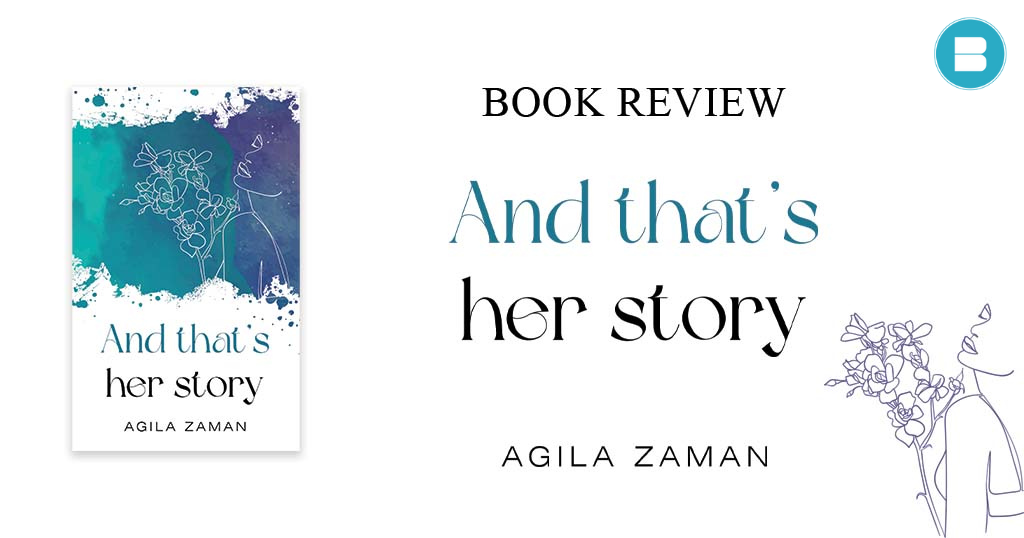
Book Review: And that’s her story a Book by Agila Zaman
Book Name: And that’s her story Author: Agila Zaman Published on – 30 July, 2023 Blurb: “And that’s her story” is an Indian novel written by Agila Zaman, centred on the travels of a random Indian teenager, her early stages, her entertaining and curious teenage life, and her toxic relationships. The author has portrayed the colours of a teenage life, explaining the pleasures and gulits of a normal teen, their connection with friends, and adding colours of lust, curiosity, depression, and relief in a very candid and wonderful manner. Every chapter gives the reader an excited feeling and sets them on a journey with the characters of the book. It’s definitely a must-read, as the seasons of life are portrayed with the utmost freshness and magic, leaving all mesmerised and touched. Review: Literature world has yet welcomed a new star who shines brightly in the form of “And that’s her story,” a debut novel by the talented Indian author, Agila Zaman. Published on July 30, 2023, this novel unfolds as a captivating journey through the trials, tribulations, and triumphs of a random Indian teenager, reflecting the nuanced hues of adolescence that resonate with readers across the globe. Agila G., the creative mind behind this compelling narrative, is not merely an author but a passionate writer whose journey with words began in childhood. However, her literary prowess extends beyond the pages, as she’s an accomplished public speaker who has garnered accolades from esteemed institutions such as the Government of Tamil Nadu, the YMCA, and the Sri Ramakrishna Missionaries. Now, at the age of 25, Agila G. has realised her dream of becoming an author, marking a momentous achievement after years of relentless dedication and perseverance. Her journey as a writer began at the tender age of fifteen when she made her poetic debut, winning an award from the Government of Tamil Nadu—a remarkable feat that laid the foundation for her future literary endeavours. “And that’s her story” emerges as the culmination of Agila G.’s unwavering commitment to her craft as she dives into the realm of novel writing, weaving a narrative that captures the essence of teenage life in India. The novel’s title itself, “And that’s her story,” holds a promise of unveiling a tapestry of experiences, emotions, and evolutions. Set against the backdrop of an Indian teenager’s life, the story traces her journey from the early stages of her existence through the highs and lows of her entertaining and curious teenage years. Agila G. delves deep into the colours of adolescent life, skillfully painting a picture of the pleasures, guilt, friendships, lust, curiosity, depressions, and relief that often define this tumultuous phase. In a candid and wonderful manner, Agila G. navigates the complexities of teenage emotions and relationships, shining a spotlight on both the joys and struggles that come with growing up. With each chapter, readers are invited on an exciting journey alongside the characters as they experience the rollercoaster of emotions that mirror the realities of teenage life. The narrative’s strength lies in Agila G.’s ability to capture the essence of these emotions with the utmost freshness and authenticity. The characters are not merely words on a page but relatable souls that readers connect with on a personal level. The author’s portrayal of the protagonist’s connections with friends, her moments of lust, curiosity, and depression—all woven seamlessly—paints a vivid and resonant portrait of youth. Giving a small sneak-peak of what you can expect in her writing style, this book is beautifully evocative and nostalgic. Agila employs descriptive language that paints vivid pictures of the contrast between different scenes she often sees. There’s a poetic quality in the way they describe the serene scenes around them, which showcases a deep appreciation for nature and the tranquilly it provides. The narrative unfolds in a reflective and introspective manner, with Agila reminiscing about the cosy home and happy family they had amidst the woods. The use of sensory details, like “starry jungle” and “hot dinner,” creates a sense of atmosphere that invites the reader to step into the protagonist’s memories. The book also captures the innocence of childhood, from the fascination with television to the warm memories of meals shared with family. The writing style flows smoothly, weaving together personal anecdotes and sensory experiences to create a nostalgic tone. “And that’s her story” isn’t just a novel; it’s a mirror reflecting the kaleidoscope of teenage experiences. The pages are filled with the magic of innocence, the turbulence of emotions, and the bittersweet taste of growth. Agila G. crafts her narrative with a delicate balance of candour and sensitivity, allowing readers to explore the depths of the protagonist’s heart and mind. As one reads this work, it becomes clear that “And that’s her story” isn’t limited to a single person’s experience—it’s a universal story that mirrors the thoughts of other teens navigating their own pathways. The ability of Agila G. to portray these common feelings demonstrates her competence as a writer who not only tells a narrative but also affects hearts. Finally, “And that’s her story” by Agila Zaman is a captivating debut that needs to be on every reader’s shelves. Agila G. not only demonstrates her writing skill, but also allows readers to experience their own adolescent years—those times of inquiry, passion, and progress. This work, with a unique viewpoint and a touch of enchantment, is a monument to the power of words.
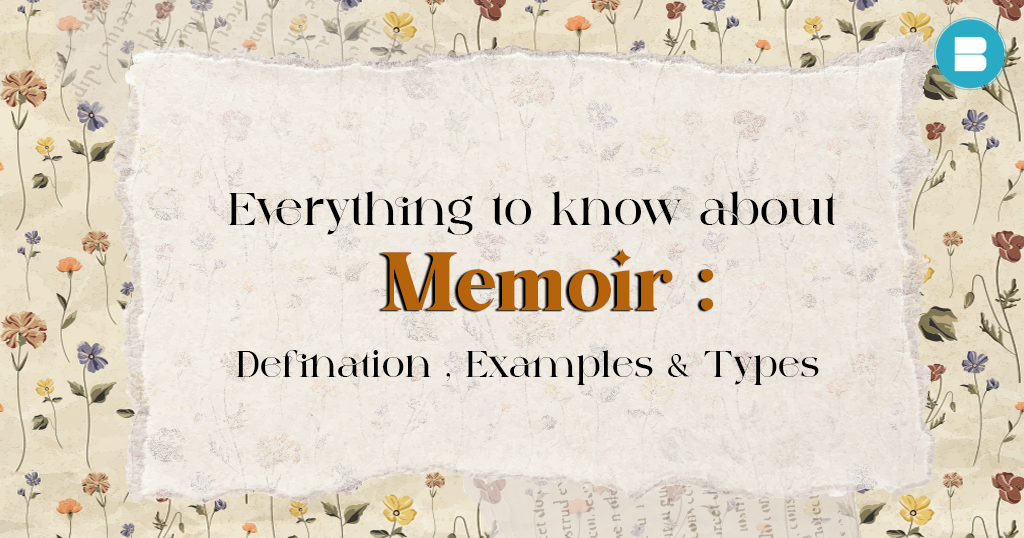
Everything to know about Memoir: Definition, Examples & Types
Memoirs have an enchanting power to capture life’s most captivating moments, allowing readers to delve into the personal experiences and reflections of the author. In this comprehensive guide, we will explore the essence of memoirs, discern the distinctions between memoirs and biographies, uncover their purpose, and highlight their defining characteristics. Read: Here’s a Complete Guide on How to Write and Publish a Biography. You may also like: 100+ Adjectives Begin with I (With Definitions & Examples) Whether you’re considering writing your memoir or simply seeking a deeper understanding of this genre, let’s embark on a journey to unravel the intricacies of memoirs. What is the definition of a memoir? At its core, a memoir is a form of autobiographical writing that delves into the memories, emotions, and experiences of the author. Unlike an autobiography that spans an entire lifetime, a memoir typically focuses on a specific period or theme. Through introspection and vivid storytelling, memoirists provide readers with a window into their lives, offering unique insights into their personal growth, challenges, triumphs, and transformation. What is a memoir vs. a biography? While both memoirs and biographies delve into the lives of individuals, they differ in their scope and approach. Biography: A Panoramic Exploration of LivesA biography is similar to a panoramic perspective, including a person’s complete life path. This detailed biography is methodically constructed with substantial research, which is generally carried out by a third-party biographer. The biographer attempts to capture the subject’s life from birth to the present using a variety of historical documents, interviews, and archival archives. Readers are taken on a chronological journey through the subject’s milestones, struggles, successes, and crucial occasions.A biography is distinguished by its authoritative and objective viewpoint. A biographer aims for objectivity and distance in order to give an unbiased portrait of the subject’s life. While objectivity provides for a more comprehensive understanding, it may lack the profound emotional resonance that comes from personal connection and genuine experience. Memoir: A Symphony of Personal EmotionsA memoir, on the other hand, is a literary symphony vibrating with the author’s own voice. Instead of being an objective spectator, the author takes centre stage as the narrator of their own tale. This first-person narrative allows authors to incorporate personal feelings, reflections, and intimate ideas into their work, resulting in an engaging interaction with readers. Memoirs frequently concentrate on certain times, topics, or events in the author’s life, providing an in-depth examination of these areas.One of the distinguishing features of memoirs is their emotional depth. Authors reveal their deepest thoughts, insecurities, and experiences, building a strong bond with readers who go along with them. This level of emotional honesty has the capacity to elicit empathy, inspiration, and a sense of shared humanity. Readers frequently find solace. What is the purpose of a memoir? Memoirs are more than just stories; they serve a deeper purpose that delves deep into the heart of human connection. They become conduits for shared experiences, providing consolation to readers who see echoes of their own trials and triumphs in the author’s memoirs. Memoirs are written to inspire, educate, entertain, preserve cultural history, and encourage empathy, creating a tapestry of emotional connection and enlightenment. Read: List of 10 Tips for Embarking on Your Creative Writing Journey. These personal narratives provide comfort by highlighting the similarity of challenges and victories. Authors urge readers to recognise similar feelings by exposing their weaknesses, providing solace in the knowledge that they are not alone on their path. Memoirs inspire readers with their stories of perseverance. Authors reveal their overcoming adversity experiences, serving as beacons of hope for those dealing with their own hardships. The stories become a source of empowerment, demonstrating the transforming potential that exists inside each of us. Characteristics of Memoirs: Subjective Perspective: Memoirs are inherently personal, narrated from the author’s subjective viewpoint. This authenticity allows readers to connect intimately with the emotions and thoughts of the author. Focus on a Theme or Period: Unlike autobiographies, memoirs zoom in on a specific theme, event, or period in the author’s life. This focused approach allows for a deeper exploration of the chosen subject matter. Emotional Resonance: Memoirs thrive on emotional authenticity. Authors recount their feelings, struggles, and joys with honesty, inviting readers to share in their emotional journey. Reflective Nature: Memoirs often incorporate introspection and reflection. Authors ponder the significance of their experiences, inviting readers to contemplate their own lives in the process. Narrative Arc: Just like fiction, memoirs follow a narrative arc with a beginning, middle, and end. This structure adds coherence and engagement to the storytelling. Universal Themes: While memoirs are deeply personal, they often touch on universal themes such as love, loss, identity, and resilience. This universality contributes to their widespread appeal. You may also read: What is Historical Fiction? Definition, Characteristics and Impact Types of Memoirs Coming-of-Age Memoir: Coming-of-Age memoirs explore the author’s transforming journey from youth to adulthood. These memoirs, centred on the challenges and lessons of adolescence, illustrate the hardships, self-discovery, and progress experienced throughout this critical stage of life. Readers follow the author as they traverse the difficulties of identity, relationships, and life transitions, reflecting the universal spirit of growing up. Travel memoirs: These memoirs transport readers on fascinating excursions that combine personal experiences with cultural immersion. The writers relate their transforming encounters while travelling across several countries, describing how unexpected scenery, people, and cultures influenced their viewpoints. These memoirs weave a tapestry of self-discovery connected with the larger world through evocative descriptions and introspective thinking. Healing Memoir: A healing memoir follows the author on his or her journey through hardship, demonstrating the way from suffering to wholeness. These anecdotes go into great depth on the emotional, physical, or psychological problems that were encountered, as well as the methods taken to achieve healing and renewal. Readers see resilience in action as writers brave the darkness and emerge into the light, providing inspiration and insight to those who are navigating their own tough journeys. Occupational Memoir: Occupational memoirs reveal the distinctive aspects of the writers’ professional life by providing insights into their occupations or hobbies. These stories provide…
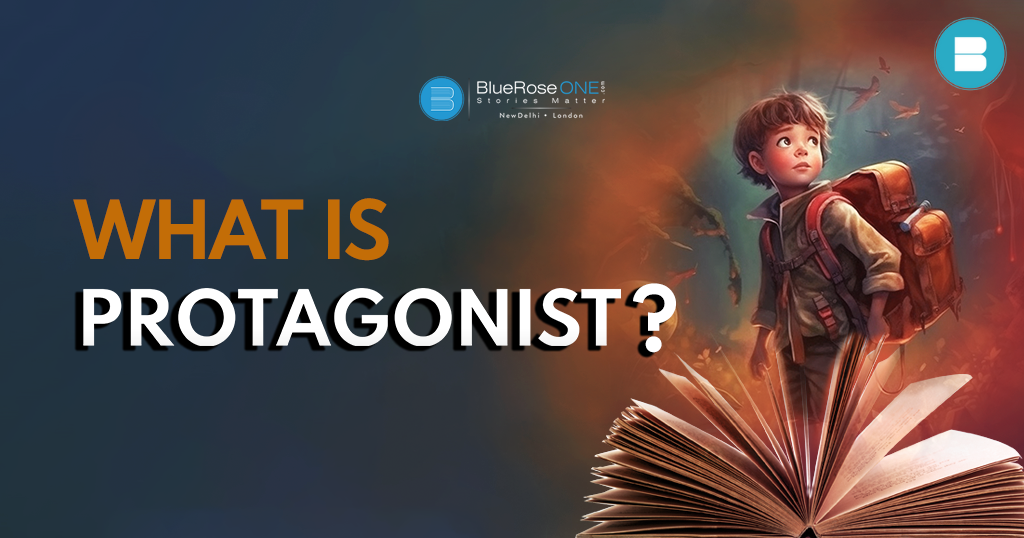
Protagonist: Definition, Meaning & Examples
When it comes to creative writing, the protagonist stands as the heartbeat of every story. A protagonist isn’t just a character; they are the soul that guides readers through the twists and turns of a narrative landscape. From the intrepid heroes battling dragons to the everyday people navigating life’s challenges, protagonists are the vessels through which readers experience emotions, growth, and transformation. This blog explores the profound role of the protagonist in creative writing and delves into the intricate dance between the writer, the protagonist, and the reader. The Essence of the Protagonist A protagonist is more than a mere protagonist; they are the lens through which the reader gazes into the intricacies of the story world. Like a mirror reflecting the human experience, the protagonist embodies both relatable qualities and unique characteristics that elicit empathy and connection. Whether it’s a noble quest for justice or a personal struggle with self-discovery, the protagonist’s journey becomes a canvas where readers paint their own emotions and experiences. For instance, consider Jane Eyre in Charlotte Brontë’s classic novel “Jane Eyre.” Jane’s journey from an orphaned, mistreated child to a strong-willed woman navigating love, identity, and societal expectations mirrors the complexities of real life. Readers are drawn into Jane’s world, relating to her struggles and triumphs, and ultimately empathising with her as she transforms into a resilient, empowered individual. You may also read: Top 10+ Must Read Books for Teens in 2025 Crafting unforgettable characters Creating a compelling protagonist requires meticulous crafting. Every detail, from physical appearance to personality quirks, is essential. A well-rounded protagonist is a product of the writer’s deep understanding of their motivations, fears, and desires. The synergy between a character’s internal and external conflicts is what ignites the narrative’s spark, making the protagonist’s journey one that resonates. Take Harry Potter from J.K. Rowling’s beloved series, “Harry Potter.” Rowling meticulously develops Harry’s personality, detailing not only his physical appearance but also his vulnerabilities, motivations, and fears. Harry’s internal conflict stemming from his identity as “The Boy Who Lived” and his external conflict against the dark forces of the wizarding world create a multidimensional character that resonates with readers of all ages. You may also like: How to Write an Author Bio | BlueRoseOne.com The Arc of Transformation At the heart of every great story is the arc of transformation—the protagonist’s evolution from the person they were at the beginning to the person they become at the end. This transformation isn’t just a plot device; it’s a reflection of the human experience. Through the protagonist’s struggles, triumphs, and self-discovery, readers embark on a parallel journey of their own. Witnessing the protagonist’s growth inspires readers to reflect on their own lives, often leading to a newfound sense of empathy and understanding. Let’s look at Santiago in Paulo Coelho’s “The Alchemist.” Santiago’s evolution from a shepherd with dreams of treasures to a seeker of personal legend mirrors the human pursuit of purpose and fulfilment. As Santiago navigates deserts and encounters mentors, readers connect with his aspirations, catalysing introspection about their own life paths and goals. Empathy and Connection Empathy is the bridge that connects readers to the protagonist’s world. A well-written protagonist invokes empathy by tapping into universal human emotions and experiences. Readers see themselves in the choices, dilemmas, and victories of the protagonist. Through this emotional connection, readers are transported beyond the confines of their own lives, expanding their horizons and fostering a deeper understanding of the world around them. In Khaled Hosseini’s “The Kite Runner,” Amir’s journey from guilt-ridden betrayal to redemption touches upon universal themes of forgiveness and atonement. Through Amir’s experiences, readers confront their own emotions and confrontations, cultivating a deeper understanding of the human condition. You may also read: List of Top 10 Nikita Singh Books of All Time Conflict and resonance No protagonist’s journey is without conflict. The obstacles and challenges the protagonist faces propel the story forward, engaging readers’ emotions and investment. Conflict allows the protagonist to grapple with moral dilemmas, personal demons, and external forces, creating a multifaceted narrative that resonates on many levels. A successful protagonist’s journey mirrors life itself—a rollercoaster of emotions, triumphs, and setbacks. In George Orwell’s “1984,” Winston Smith’s internal rebellion against a dystopian regime reflects the struggle for individuality and freedom in the face of oppression. Winston’s external conflict against a surveillance state resonates with readers grappling with their own ethical dilemmas and societal tensions. Narrative Empowerment A strong protagonist isn’t just a character; they empower the narrative. They dictate the pace and tone of the story, making each twist and turn an extension of their identity. As the protagonist evolves, so do the narrative’s dynamics, keeping readers engaged and invested in the outcome. This synergy between character and story is what transforms a collection of words into an unforgettable experience. In Harper Lee’s “To Kill a Mockingbird,” Atticus Finch’s unwavering pursuit of justice amidst racial prejudice empowers the story’s exploration of morality and empathy. Atticus’s values dictate the tone of the narrative, inviting readers to contemplate their own convictions and biases. You may also like: How to Publish a Book? | Publish Your Book | BlueRoseOne Steps to Brainstorm a strong Protagonist Crafting a strong protagonist is a fundamental aspect of creating a compelling and engaging story. The protagonist is the character who drives the narrative forward, captures readers’ attention, and guides them through the ups and downs of the plot. To brainstorm a strong protagonist, consider the following steps: Identify the Core Theme and Genre: Start by defining the central theme and genre of your story. This will help you determine the qualities and traits your protagonist should possess to effectively navigate the challenges and conflicts of the narrative. Establish the Protagonist’s Goal: Determine the overarching goal that the protagonist will strive to achieve throughout the story. Whether it’s a quest for justice, self-discovery, love, or survival, the goal will shape the protagonist’s motivations and actions. Character Traits and Flaws: Create a list of character traits and flaws that align with the…
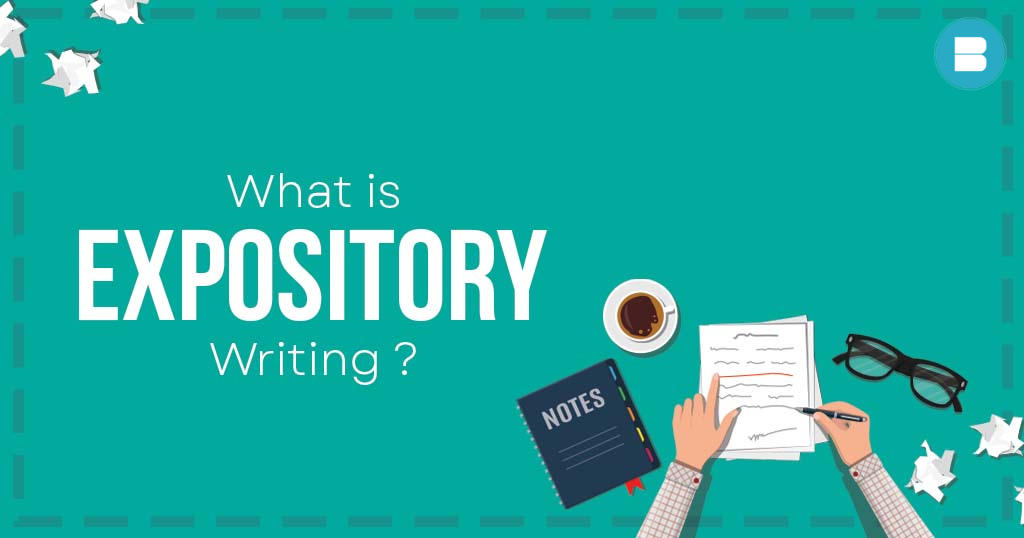
What is Expository Writing: Types & How to Write
In the realm of written communication, expository writing stands as a beacon of clarity and understanding. This style of writing serves as a guiding light for readers, illuminating complex ideas, concepts, and information in a straightforward and organised manner. Read: A Complete Guide on How to Write & Publish an Anthologies of Poems in 2023 Whether you’re crafting an expository article, essay, or paragraph, this mode of writing is a powerful tool for conveying information effectively. Let’s delve into what expository writing entails, explore its various types, and uncover the art of mastering this style. Understanding Expository Writing At its essence, expository writing serves as a beacon of clarity, aiming to elucidate and inform. This genre delves into the art of shedding light on intricate subjects, providing readers with a profound comprehension and knowledge base. Unlike the world of creative writing, which often thrives on the interplay of ambiguity and emotion, expository writing finds its strength in lucidity and objectivity. Its primary objective is to educate, unravel complexities, and actively engage the audience by presenting a coherent structure of facts, evidence, and logical explanations. Types of Expository Writing Here’ s a list for types of Expository Writing: Expository Essays Expository Articles Expository Paragraphs Expository Essays: These essays stand as pillars of academic writing, revered for their systematic approach. When addressing a particular topic, expository essays adopt a balanced analysis. The introduction unveils the chosen topic, the body paragraphs meticulously present a buffet of evidence and analysis, and the conclusion acts as a succinct summary of the key points.Example: An expository essay examining the impact of social media on society would delve into both the positive and negative effects. The introduction would set the stage by introducing social media’s prevalence; body paragraphs would dissect its influence on communication, mental health, and relationships; and the conclusion would encapsulate the key takeaways. Expository Articles: These literary gems are a staple in journalism and non-fiction writing. Expository articles present an all-encompassing overview of a subject, diving headfirst into its intricate details, root causes, ripple effects, and potential solutions. Often gracing the pages of magazines, newspapers, and online platforms, these articles serve as guides to unravel complex matters for the masses.Example: An expository article on climate change would not only expound on its environmental impact but also dissect the scientific consensus, historical context, human activities contributing to it, and potential strategies to mitigate its effects. Expository Paragraphs: Even within longer compositions, the power of expository writing lies in its ability to distil complex ideas into bite-sized portions. These expository paragraphs serve as guiding lights, clarifying concepts, providing crisp definitions, and furnishing key information succinctly.Example: Within an article discussing the concept of artificial intelligence, an expository paragraph might provide a concise yet comprehensive definition of machine learning, its applications, and its implications for various industries. You may also read: Book Review: Lord of the Flies by William Golding Types of Expository Writing Choose a Clear Topic: The foundation of effective expository writing lies in selecting a topic that can be effectively explained and explored within the confines of your piece. Avoid vagueness and opt for topics that are specific and well-defined. Research Thoroughly: Delve into reliable sources to gather information that substantiates your chosen topic. Rely on academic journals, credible books, reputable websites, and authoritative experts to ensure the accuracy and reliability of your content. Organise structurally: The symphony of expository writing demands a well-structured arrangement. Commence with a captivating introduction that introduces both the topic and your thesis statement. Proceed to craft body paragraphs that venture into subtopics, presenting evidence and analysis. Finally, conclude with a summary that encapsulates the main points, leaving readers with a lasting impression. Maintain Objectivity: The heart of expository writing beats with objectivity. While presenting your analysis, eschew emotional language and personal biases. Instead, rely on a foundation of facts, evidence, and logical reasoning to convey your message. Use Clear Language: The path to mastery involves traversing the realms of clarity and simplicity. Avoid jargon and complex terminology unless they are thoroughly explained. The goal is to ensure that your content is accessible and comprehensible to a diverse array of readers. Examples of Expository Writing: Expository Essay Example: An essay explaining the impact of climate change could present scientific data, causes and effects, and potential solutions. It would provide a balanced view of the topic without emotional persuasion. Expository Article Example: An article about the benefits of meditation might explore its various techniques, the scientific evidence supporting its effects on mental health, and how it can be incorporated into daily routines. Expository Paragraph Example: Within an article about space exploration, a paragraph could provide a clear definition of dark matter, citing scientific sources and explaining its significance in astrophysics. All in all, expository writing serves as a beacon of clarity in the world of written communication. Its purpose is to educate and inform, making complex topics accessible to a wide range of readers. Read: List of Top 5 AI-Powered Content Generator for Quick and Quality Writing. Through various forms such as essays, articles, and paragraphs, expository writing provides a structured approach to presenting facts, evidence, and logical explanations. By mastering this style, writers can shine a light on the intricacies of our world, fostering a deeper understanding among their readers.
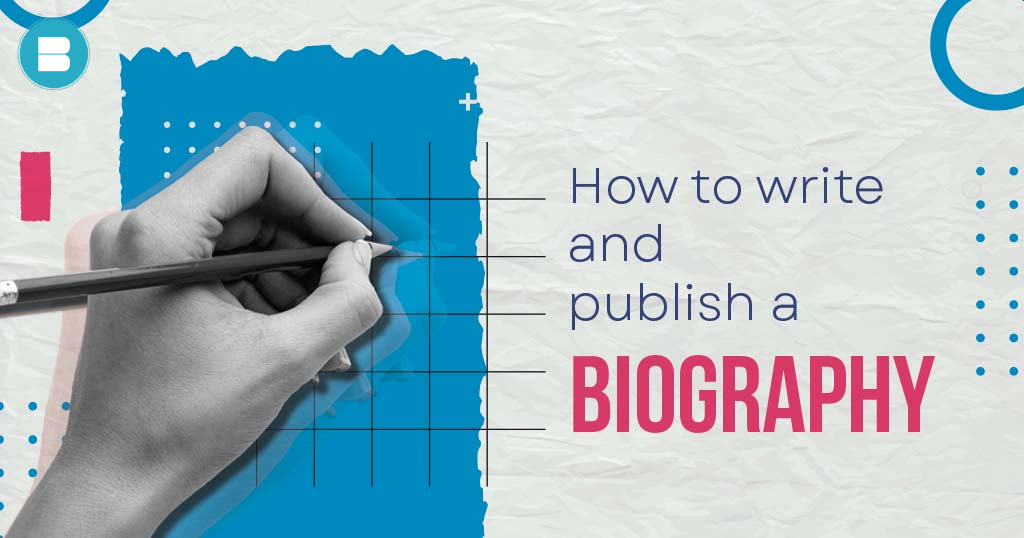
A Complete Guide on How to Write and Publish a Biography?
Biographies are an intimate gateway into the lives of remarkable individuals, allowing us to glimpse their journeys, struggles, and triumphs. Whether you’re passionate about chronicling the lives of historical figures, celebrities, or even your own family members, writing and publishing a biography can be an incredibly fulfilling endeavour. In this comprehensive guide, we will take you through the process of crafting a compelling biography and navigating the intricacies of getting it published You may also read: What is An Anti-Hero? Traits, Motivations & Famous Examples How to write a Biography? Understanding the Essence of Biography A biography is more than a mere chronicle of events; it is an exploration of a person’s essence. It delves beyond dates and facts, seeking to understand the motivations, influences, and emotions that shaped the subject’s journey. A successful biography captures the person’s unique voice, experiences, and significance within a broader context. Brainstorming: Laying the Foundation Brainstorming is a crucial first step in the biography-writing process. It involves gathering ideas, themes, and angles that will guide your narrative. Here’s how to approach it: Select your subject: Choosing your subject is the foundation of your biography. Opt for someone whose life story resonates with you, whether they’re a historical luminary, a contemporary influencer, or even someone close to your heart. A captivating subject ensures that your enthusiasm will translate into a compelling narrative that engages readers. Research: Preliminary research is your roadmap to understanding your subject’s life journey. Delve into existing literature, articles, and documentaries to gain a grasp of their background, accomplishments, and pivotal moments. This initial exploration will guide you towards key events and themes that deserve further exploration in your biography. Identify Themes: Thematic exploration provides depth and structure to your biography. Reflect on the recurring patterns or motifs that define your subject’s life. Is their story marked by resilience in the face of adversity, innovation in their field, or a profound impact on society? Defining these themes will guide the narrative’s direction, adding cohesion and resonance. Gather Primary Sources: Primary sources are the treasure trove of your biography. Seek out personal letters, diaries, and interviews that provide direct insights into your subject’s thoughts, emotions, and experiences. These firsthand accounts offer authenticity and intimacy, enabling you to craft a vivid and authentic portrayal of their life journey. You may also like: Amazon Ads for Authors: A Step-by-Step-Guide to Boosting Book Sales You may also like: Left Behind Series Books in Order: Where to Begin Crafting the Narrative for Biography: Structured Approach: Creating a structured outline lays the foundation for a coherent biography. Decide whether to adopt a chronological or thematic framework. A chronological order follows the subject’s life events in sequence, providing a clear timeline. A thematic approach groups events based on recurring themes or significant life stages, enabling a deeper exploration of the subject’s character and journey. This structure guides your writing, ensuring a logical flow that engages readers and highlights the most impactful moments of the subject’s life. Opening Impact: An attention-grabbing introduction sets the tone for your biography. Start with a hook that intrigues readers—a pivotal event, a thought-provoking quote, or an anecdote that encapsulates the subject’s essence. This initial impact draws readers in, sparking their curiosity and compelling them to delve deeper into the narrative. A compelling opening establishes an emotional connection and primes readers for the journey ahead, ensuring they are invested in discovering the subject’s story. Captivating Details: Vivid details breathe life into your biography, immersing readers in the subject’s world. Describe their surroundings, relationships, and experiences with sensory imagery. Transport readers to a specific time and place, allowing them to visualise and empathise with the subject’s journey. Sensory details—such as sights, sounds, smells, and textures—create a rich and immersive reading experience. These details not only evoke emotions but also establish a strong connection between readers and the subject’s experiences. Balanced Perspective: A balanced portrayal adds depth and authenticity to your biography. Present the subject’s achievements and successes alongside their challenges and vulnerabilities. Humanise them by showcasing their personal qualities, flaws, and growth over time. This multi-dimensional perspective resonates with readers, making the subject relatable and real. Highlighting both triumphs and struggles creates a genuine emotional connection, allowing readers to root for the subject’s successes while understanding the complexity of their journey. Examples of biographical narratives: Historical Figure: Mahatma Gandhi: In “The Story of My Experiments with Truth,” Gandhi provides an intimate account of his life, revealing his transformation from a hesitant lawyer to a global advocate for nonviolent resistance. His narrative showcases personal growth, inner struggles, and dedication to social change. Contemporary Icon: Steve Jobs: In Walter Isaacson’s “Steve Jobs,” the biography delves into the complexities of Jobs’ character, exploring his visionary leadership, innovative mindset, and personal challenges. The narrative captures Jobs’ creative genius and his influence on technology and design. Personal Biography: Maya Angelou’s autobiographical series, starting with “I Know Why the Caged Bird Sings,” recounts her tumultuous life journey from childhood to adulthood. Her narrative confronts racism, trauma, and personal triumphs, resonating with readers through its candidness and resilience. You may also like: The Importance of Professional Editing in Self-Publishing How to publish a Biography? Once you’ve meticulously crafted a captivating biography, the next step is to bring your work to the world through publication. Publishing a biography is a gratifying endeavour that allows you to share stories that resonate with readers and contribute to the literary landscape. In this guide, we will explore the steps and strategies involved in publishing a biography, accompanied by illustrative examples. Choosing Your Publishing Path Before you embark on the publishing journey, you must decide between traditional publishing and self-publishing. Each path has its own merits and considerations. Traditional Publishing: This route involves submitting your manuscript to literary agents or publishing houses. If your manuscript is accepted, the publishing house handles editing, design, distribution, and marketing. While traditional publishing offers broader reach and industry expertise, securing a deal can be competitive and time-consuming. Self-Publishing: Self-publishing empowers you to retain creative control and publish your biography…
